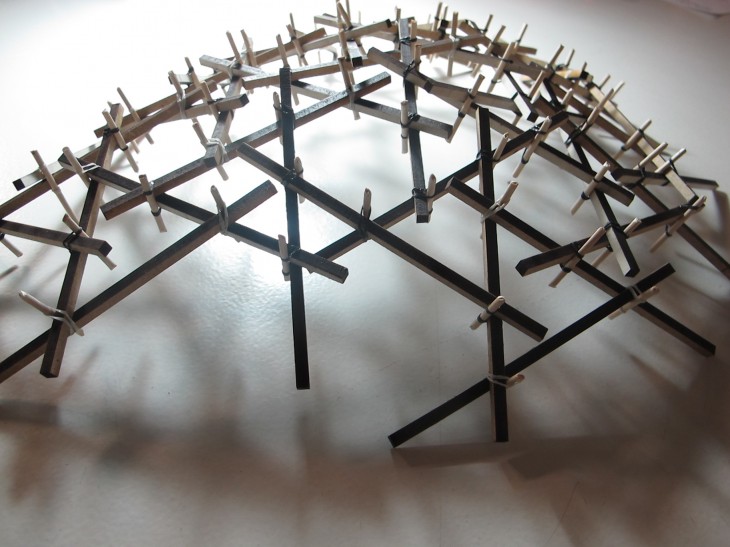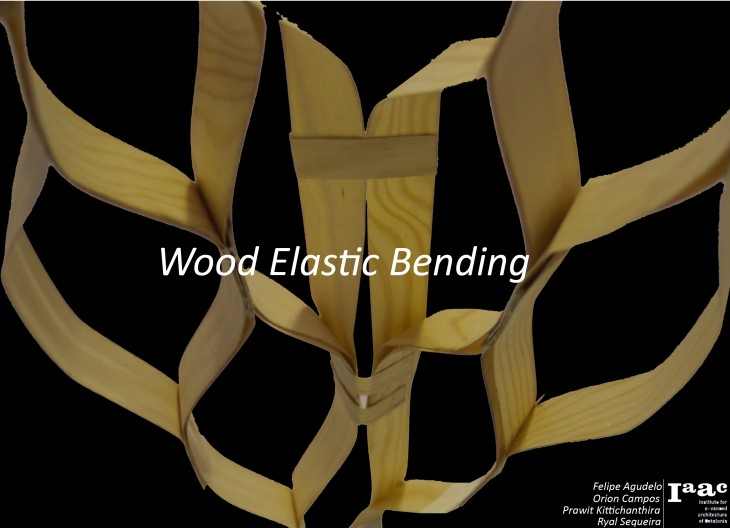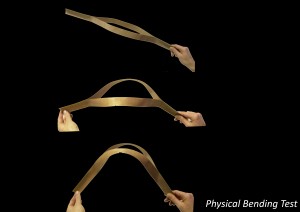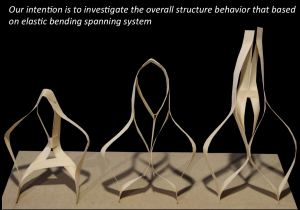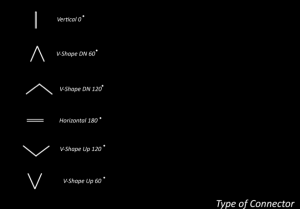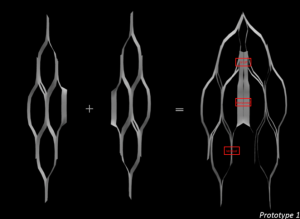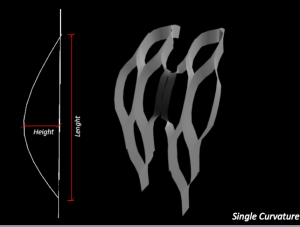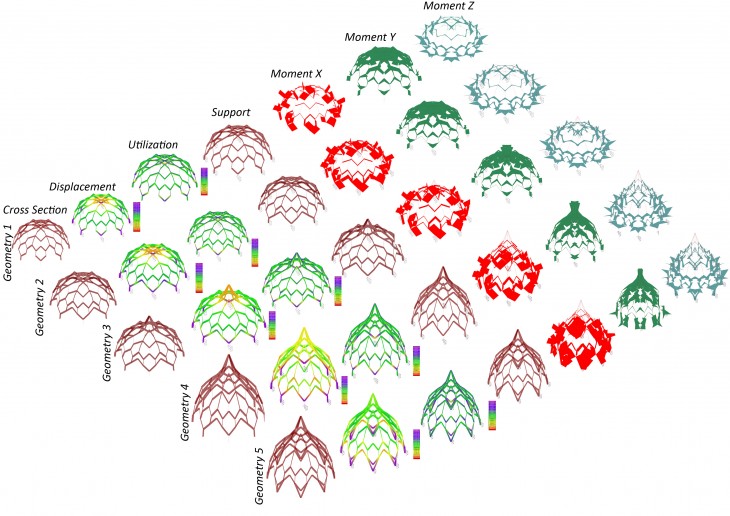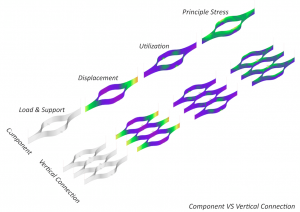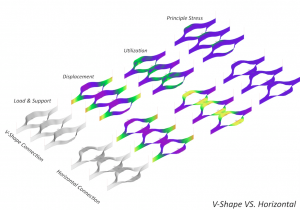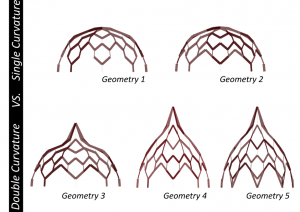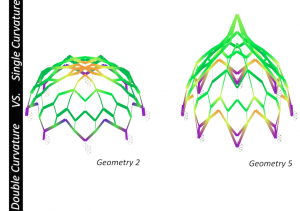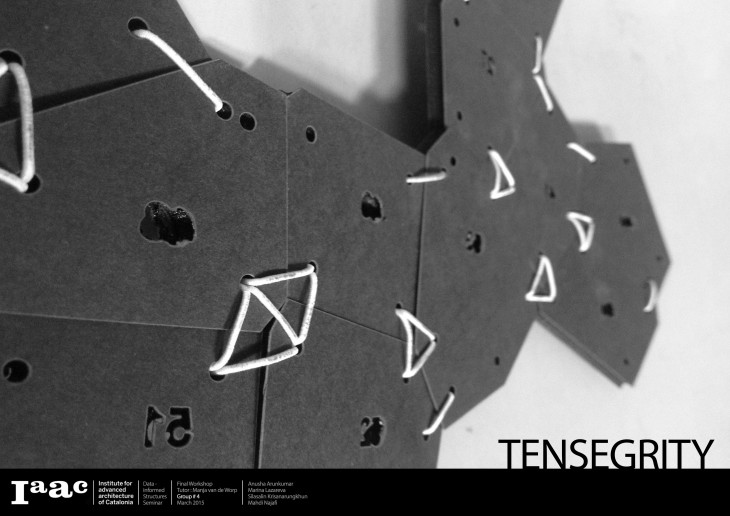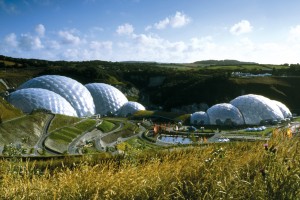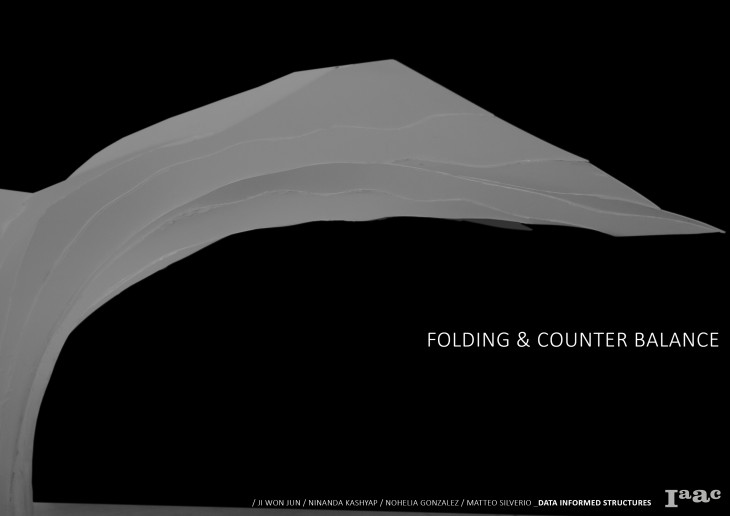Team: Lubna Alayeli, Ceren Temel, Samuel Shapiro, Nina Jotanovic
Category Archives: Students
Reciprocal Grids
DIS Workshop_Wood Elastic Bending
DIS Workshop . Group 4 . Tensegrity
BY : Anusha Arunkumar, Silasalin Krisanarungkhun, Marina Lazareva, Mahdi Najafi
The main approach of this exercise for us was to find and test the some parameters that may influence the structures that are really work with tensional integrity or better to say tensegrity. So we tried to study the behavior of different geometries and joints, and figure out their impact on tensional behavior of a structure. Begining with a simple surface, some parameters were have been manipulated in both real physical model, and virtual simulations in Kangaroo. And Finally, we discovered a somehow balanced relation between geometrical patterns, joint types and supports, to distribute the loads in a double curved surface.
for us was to find and test the some parameters that may influence the structures that are really work with tensional integrity or better to say tensegrity. So we tried to study the behavior of different geometries and joints, and figure out their impact on tensional behavior of a structure. Begining with a simple surface, some parameters were have been manipulated in both real physical model, and virtual simulations in Kangaroo. And Finally, we discovered a somehow balanced relation between geometrical patterns, joint types and supports, to distribute the loads in a double curved surface.
DIS WORKSHOP_ Folding and Counter Balance
The design idea was based on generating a shell cantilever structure with minimal foot print. For achieving this purpose multiple configuration were explored as an evolution, where each iteration was informed by the previous one. The final piece consisted in a folded structure, where the material thickness (counter balance), type and density of folds responded to local needs detected using Karamba.

